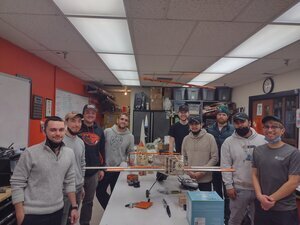
College of Engineering Unit:
The objective for this year’s competition is to design, build and test an aircraft to complete in a series of missions that require the remote controlled aircraft to fly with, and deliver, 30mL syringes and vaccine vial packages. The competition regulations and mission requirements were distilled into specific detailed constraints and engineering specifications, and a Quality Function Deployment (QFD) strategy was applied to further identify design decision priorities for the aircraft. Simple weighted decision matrices then also deployed to identify specific configuration decisions. Due to energy storage constraints and endurance required, a twin engine ’push-pull’ configuration was found to be most suitable by its contributions to endurance, flight speed and STOL capabilities specifically. This configuration allows for two different engines and propellers, each optimized for maximum efficiency for different segments of the flight. Concern was also directed towards the payload design, with sensitivity analysis yielding a simple, compact design that allows for maximum score with minimum points of failure. After these preliminary analyses, the design converged to a tandem-wing, twin-boom, twin-engine, pushpull configuration with a 6 ft wingspan, 5.3 sq ft wing area that is capable of a 25 ft take-off at MTOW, 56 kts cruise speed, 6 vial package/ 60 syringe payload capacity.
Project Website(s):
Industry Sponsor(s):